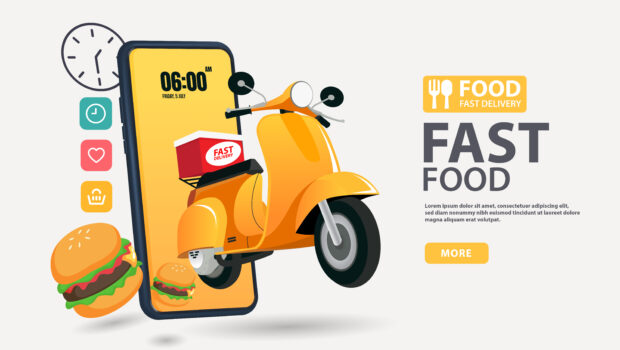Food Delivery Systems for Restaurants: Considerations and Best Practices
More and more customers today want their meals from restaurants brought right to their door. This growing demand for delivery is pushing restaurants to change how they do business.
Restaurants now need to focus on takeout and delivery in new ways if they want to keep up.
This guide will discuss important steps restaurants can take to succeed as food delivery explodes.
The Rise of Food Delivery
Food delivery is becoming mainstream. In the past, you had to phone in takeout orders. Now, customers go online or use apps on their smartphones. Digital ordering makes getting takeout much quicker and easier.
Here are some big reasons delivery is taking off:
- Convenience: People like having meals delivered fast without leaving home.
- On-demand apps: Apps like Grubhub let you order food for delivery any time with a few taps.
- Mobile ordering: Phones and apps allow fast, simple ordering, payment and tracking.
- More working women: As more women work outside the home, families have less time to cook and view delivery as a helpful option.
Picking a Delivery Model
Restaurants have two main choices for handling deliveries:
Third Party Delivery
Services like UberEats and DoorDash take care of delivery for restaurants. They bring orders to customers’ doors. The restaurant simply prepares the food.
Pros:
- Little work for restaurants
- Existing drivers and infrastructure
- Built-in customer base
- More exposure
Cons:
- High fees per order (up to 30% of cost)
- Restaurant loses control
- Fewer customer data access
In-House Delivery
The restaurant handles delivery in-house. They hire their own drivers and market directly to customers.
Pros:
- More control over operations and brand
- All profits go to the restaurant
- Direct customer relationships
Cons:
- Big upfront investment in staffing and marketing
- Takes time and money to build out
- Harder to access new customers
The right choice depends on order volume, budget, and business goals. Delivery partners provide quick startup. In-house delivery costs more initially but can be more profitable long-term with scale.
Online Ordering Platforms
To enable smooth delivery, restaurants need easy online ordering platforms. These power orders are from the customer’s device to the restaurant’s epos ordering systems.
Good platforms let restaurants:
- Integrate with their point-of-sale and menu systems
- Customize menus and offers
- Clearly show delivery fees and tipping
- Collect customer ratings and reviews
- Optimize ordering on phones, websites and tablets
- Review data on key metrics like order frequency and size
Platforms tailored to restaurants seamlessly connect digital orders to back-end systems. This results in easy management for staff and a simple process for customers.
Packaging That Delivers
With more takeout and delivery, packaging makes a big impression. Important factors include:
- Sturdy, leak-proof containers that maintain food quality
- Compartments to separate items
- Eco-friendly materials when possible
- Clear restaurant branding
Great packaging makes meals look and taste fresh. It also prevents spills and waste.
Finding Delivery Partners
Restaurants outsourcing delivery rely on third party fleets. Choosing reliable, high-quality courier services is essential.
Key traits to look for in partners:
- Strong record of food safety practices
- Large enough service area and capacity
- Fast, accurate delivery history
- Fair pricing model
Good communication and monitoring helps avoid issues like cold food. Drivers represent the brand, so aligned service standards are critical.
Setting Prices
Pricing wisely is essential for profitable delivery. Restaurants must account for all costs involved.
Key pricing factors:
- Comparing to similar restaurants
- Calculating delivery labor and packaging costs per order
- Showing delivery fees and tipping clearly so customers know total cost
Many restaurants charge a bit more for delivery to cover expenses. Adjusting pricing based on data insights helps maximize returns.
Marketing Your Delivery
Making customers aware of delivery options requires marketing. Effective approaches include:
- Optimizing your website and app for takeaway for easy ordering
- Targeted social media ads
- Loyalty rewards programs
- Getting positive reviews online
- Search engine optimization to rank high in results
- Email campaigns with special offers
The goal is visibility across channels. Satisfied customers then spread the word.
Leveraging Technology
Technology can streamline delivery operations. Helpful solutions:
- Order management software to route orders
- Inventory management to optimize supplies
- Delivery apps to efficiently dispatch drivers
- Platform integrations for smoother data flow
- Analytics to uncover insights
The right tech stack automates the ordering process. This results in top-notch execution for customers.Focusing on delivery can drive growth. With smart planning, restaurants can turn takeout and delivery into a competitive advantage.
Cover Image by Freepik














